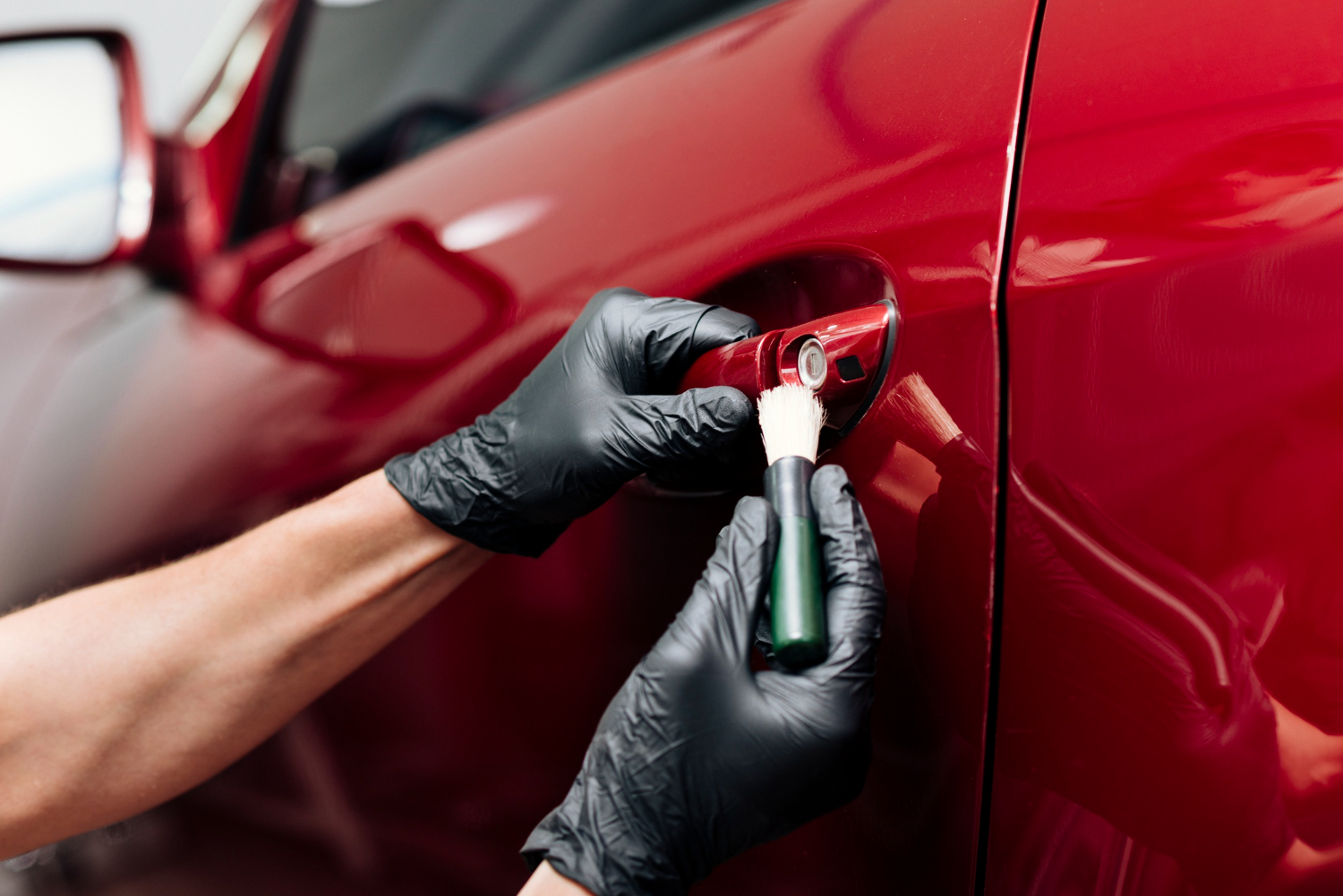Every car owner loves the feeling of driving a freshly polished car. The glossy shine, the smooth surface, and the sense of pride in your vehicle’s appearance are unmatched. But keeping that showroom shine is not easy—sunlight, dust, rain, and road grime all conspire to dull your car’s paint.
Two of the most popular solutions for preserving shine and protection are traditional car wax and the more advanced ceramic coating. Both have their merits, but they work very differently. So, which is better for long-lasting shine and protection? Let’s break it down.
What is Car Wax?
Car wax has been around for decades and is often seen as the go-to option for enhancing a car’s shine. Typically made from natural substances like carnauba wax (extracted from Brazilian palm leaves) or synthetic polymers, wax creates a thin protective layer on the paint.
Benefits of Car Wax:
- Enhanced Shine: Wax gives your car a deep, warm glow, especially with carnauba wax.
- Water Repellence: Creates a slick surface that causes water to bead and roll off.
- Affordability: Easy on the wallet compared to advanced coatings.
- Easy Application: Available in spray, paste, or liquid form, making it user-friendly.
Drawbacks of Car Wax:
- Short Lifespan: Wax protection typically lasts 1–2 months.
- Limited Protection: Cannot withstand stone chips, scratches, or harsh UV rays.
- Maintenance Required: Frequent reapplication is needed to maintain shine.
What is Ceramic Coating?
Ceramic coating is a liquid polymer made with nanotechnology that bonds chemically with your car’s paint. Once cured, it forms a semi-permanent or permanent layer of protection. Unlike wax, which sits on top of the paint, ceramic coating integrates with it.
Benefits of Ceramic Coating:
- Long-Lasting Protection: Can last 2–5 years (or more) depending on quality and care.
- Durability: Resistant to UV rays, chemicals, bird droppings, and oxidation.
- Scratch Resistance: Provides a harder surface than wax, reducing swirl marks and light scratches.
- Hydrophobic Properties: Repels water, dirt, and grime effectively, making cleaning easier.
- Maintains Shine: Preserves that glossy, “just polished” look for years.
Drawbacks of Ceramic Coating:
- Higher Cost: Professional application can be a significant investment.
- Complex Application: Requires expert installation for best results.
- Not Bulletproof: Won’t prevent deep scratches or stone chips.
Durability: Wax vs Ceramic Coating
If you’re looking for longevity, ceramic coating is the clear winner. While wax needs reapplication every few weeks, ceramic coating can last for several years with proper care.
- Wax: 4–8 weeks of protection.
- Ceramic Coating: 2–5 years of protection.
This makes ceramic coating a far better option for car owners who want long-term results without frequent upkeep.
Shine and Aesthetics
When it comes to aesthetics, both products deliver—but in different ways.
- Wax Shine: Warm, deep, and rich. Perfect for car shows or a weekend detail.
- Ceramic Shine: Reflective, glossy, and “wet look” finish that stays consistent over time.
If you want that classic glow, wax is great. But for a high-gloss modern finish, ceramic coating is unbeatable.
Protection Against Environmental Damage
Cars face constant environmental hazards: UV rays, acid rain, bird droppings, tree sap, and road salt.
- Wax: Offers minimal resistance. It may help temporarily but breaks down quickly under sun or rain.
- Ceramic Coating: Provides a hard, chemically resistant surface that shields paint from oxidation, fading, and contaminants.
For Australian conditions—where UV exposure is intense—ceramic coating provides far superior protection.
Ease of Maintenance
Keeping your car clean is easier with ceramic coating.
- Wax: Dirt and water bead, but the effect fades quickly. Frequent washing and reapplication are needed.
- Ceramic Coating: Its hydrophobic nature means water, mud, and grime slide off easily. A quick rinse restores shine.
Ceramic-coated cars often need fewer washes and look cleaner for longer.
Cost Comparison
The choice often comes down to budget.
- Wax: Inexpensive, with products available from $20–$100. DIY-friendly.
- Ceramic Coating: Professional installation ranges from $500–$2,000 depending on coverage and brand.
While ceramic coating costs more upfront, it saves money in the long run by reducing detailing costs, paint correction, and reapplications.
When Should You Choose Wax?
Wax is a good option if you:
- Want a temporary shine for special occasions.
- Enjoy detailing your car yourself.
- Are on a tight budget and don’t mind frequent maintenance.
When Should You Choose Ceramic Coating?
Ceramic coating is ideal if you:
- Want long-term shine and protection.
- Drive regularly and want easier cleaning.
- Live in harsh environments (sunny, rainy, or coastal).
- Plan to keep your car for years and want to preserve its resale value.
Can You Use Both Wax and Ceramic Coating Together?
Some car enthusiasts combine both: apply ceramic coating for durability, then occasionally top it with wax for added depth of shine. However, this is optional—ceramic coating alone usually provides enough gloss.
Why Vdesi Customs Recommends Ceramic Coating
At Vdesi Customs, we’ve worked with countless vehicles and understand the difference between wax and ceramic coating. While wax has its place, we recommend ceramic coatings for customers who want long-lasting shine, superior protection, and easier maintenance.
We work with top brands to deliver premium ceramic coatings that are designed to withstand Australia’s tough climate. Our team ensures flawless application, so your car’s paint is protected and shining for years.
📍 Visit us at Unit 1/23 Perpetual Street, Truganina, Victoria, Australia 3028
📞 Call us at +61 477 406 226
📧 Email: info@vdesicustoms.com

